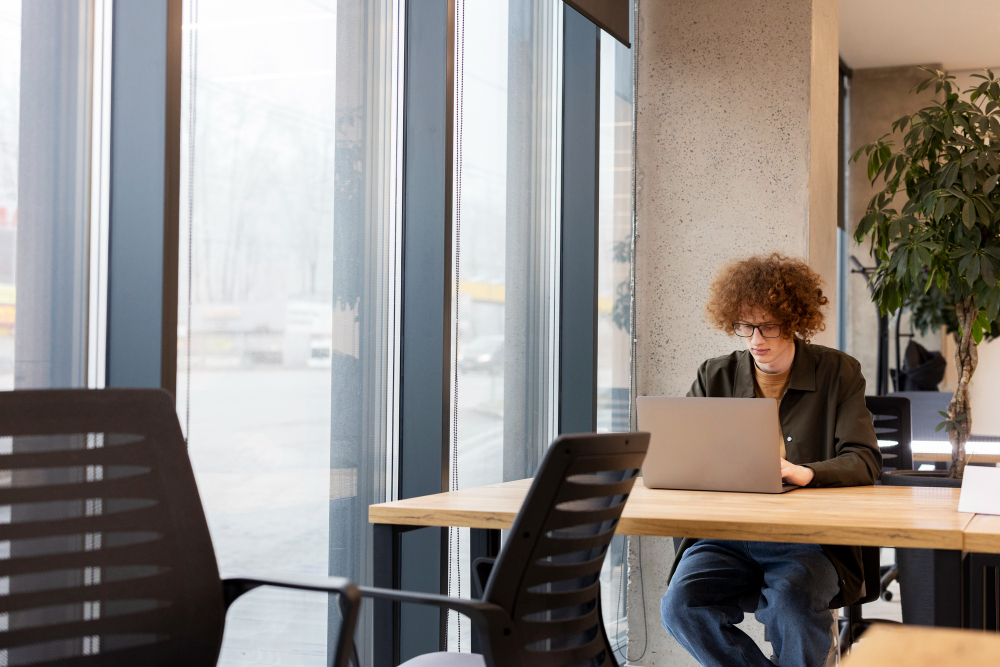
How productive is your workplace? It’s a question that can make or break the efficiency and morale of your team. Productivity isn’t just about working harder or longer hours; it’s about creating an environment where your employees and colleagues can shine, work smarter and thrive.
Understanding Workplace Productivity
Workplace productivity measures how efficiently a person or machine converts inputs into useful outputs. For employees, this means achieving better results in less time, without necessarily working longer hours.
A productive workplace often leads to higher employee satisfaction, which in turn boosts productivity further. It’s a virtuous cycle worth striving for.
Factors Affecting Workplace Productivity
Optimise Office Design
Did you know that the design of your office can significantly impact productivity? The Gensler UK Workplace Survey revealed that although employees spend less time in offices post-pandemic, they still need a conducive environment to be productive.
Offices that provide natural light, comfortable temperatures, and ergonomic furniture are essential. Adding natural elements like plants can increase productivity by 15%, according to Sketch Studios. Imagine working in a space that feels more like a green sanctuary than a sterile cubicle farm. Wouldn’t that make you more productive?
Embrace Flexible Working
Flexibility is no longer a luxury; it’s a necessity. The CIPD’s 2023 report highlights that flexible working arrangements lead to higher job satisfaction and productivity. About 60% of employees now enjoy flexible working options, up from 51% the previous year. Offering flexible working from day one can attract top talent and improve retention. Can you afford to miss out on this competitive advantage?
Control Lighting and Temperature
Are your employees squinting at their screens or shivering at their desks? Proper lighting and temperature control are crucial. Studies show that poor lighting and uncomfortable temperatures can significantly reduce productivity and increase error rates, according to Dynamic Business. Ensuring a well-lit, comfortable environment can make a world of difference.
Minimise Noise and Clutter
Can you hear yourself think in your office? Background noise can increase stress and negatively affect health and productivity. An organised, clutter-free workspace helps employees focus better and work more efficiently, as noted by Interaction UK.
Creating a quiet, tidy environment could be the key to unlocking higher productivity.
6 Practical Steps for Improving Your Office Productivity
-
Enhance Your Office Aesthetics
The colours and layout of your office can influence how your team feels and performs. Blue enhances focus, while green boosts creativity. Ensure the office has a good flow and is visually appealing. A splash of the right colour could transform a dull space into a hub of activity.
-
Provide Ergonomic Furniture
Comfortable, adjustable furniture can prevent physical discomfort and increase productivity. Ergonomic chairs and desks that cater to various body types and working styles can make your team more comfortable and, consequently, more productive.
-
Implement Biophilic Design
Integrate natural elements into the office, such as plants and natural light, to improve well-being and productivity. Biophilic design isn’t just a trend; it’s a proven way to enhance the work environment. Imagine working in a space that feels connected to nature – wouldn’t that make your day more pleasant?
-
Offer Flexible Working Arrangements
Allowing employees to choose flexible working hours or locations can lead to higher satisfaction and productivity. It’s about trust and autonomy, letting your team work in ways that suit them best. Flexibility can be a game-changer.
-
Regular Feedback and Communication
Keep talking! Hold regular meetings to encourage collaboration and address any issues. Providing constructive feedback helps employees improve their performance. Clear communication and regular check-ins can keep everyone aligned and motivated.
The Statistics Prove It
The National Institute for Occupational Safety and Health found that proper lighting and comfortable temperatures are essential for productivity. The CIPD’s survey highlights the growing importance of flexible working, with 71% of employees considering it crucial when looking for new roles. These insights underline the importance of creating a work environment that supports your team’s needs.
Conclusion
Improving workplace productivity isn’t about squeezing more hours out of your team. It’s about creating an environment where they can do their best work.
By optimising office design, embracing flexible working, controlling lighting and temperature, and minimising noise and clutter, you can create a more productive and satisfying workplace.
Implementing ergonomic furniture, biophilic design, and regular feedback can further enhance productivity. Start making these changes today, and watch your team’s productivity soar.

